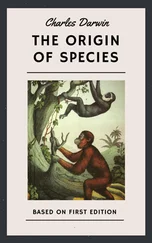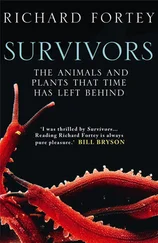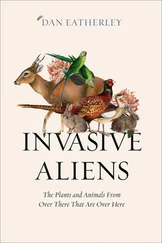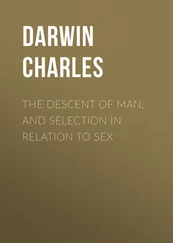Charles Darwin - The Variation of Animals and Plants under Domestication — Volume 2
Здесь есть возможность читать онлайн «Charles Darwin - The Variation of Animals and Plants under Domestication — Volume 2» — ознакомительный отрывок электронной книги совершенно бесплатно, а после прочтения отрывка купить полную версию. В некоторых случаях можно слушать аудио, скачать через торрент в формате fb2 и присутствует краткое содержание. Жанр: foreign_antique, foreign_prose, на английском языке. Описание произведения, (предисловие) а так же отзывы посетителей доступны на портале библиотеки ЛибКат.
- Название:The Variation of Animals and Plants under Domestication — Volume 2
- Автор:
- Жанр:
- Год:неизвестен
- ISBN:нет данных
- Рейтинг книги:3 / 5. Голосов: 1
-
Избранное:Добавить в избранное
- Отзывы:
-
Ваша оценка:
- 60
- 1
- 2
- 3
- 4
- 5
The Variation of Animals and Plants under Domestication — Volume 2: краткое содержание, описание и аннотация
Предлагаем к чтению аннотацию, описание, краткое содержание или предисловие (зависит от того, что написал сам автор книги «The Variation of Animals and Plants under Domestication — Volume 2»). Если вы не нашли необходимую информацию о книге — напишите в комментариях, мы постараемся отыскать её.
The Variation of Animals and Plants under Domestication — Volume 2 — читать онлайн ознакомительный отрывок
Ниже представлен текст книги, разбитый по страницам. Система сохранения места последней прочитанной страницы, позволяет с удобством читать онлайн бесплатно книгу «The Variation of Animals and Plants under Domestication — Volume 2», без необходимости каждый раз заново искать на чём Вы остановились. Поставьте закладку, и сможете в любой момент перейти на страницу, на которой закончили чтение.
Интервал:
Закладка:
The stripes and segments just referred to are not due, as far as is known, to reversion to characters derived from a cross, but to characters lost by variation. These cases, however, as Naudin (13/22. 'Nouvelles Archives du Museum' tome 1 page 25. Alex. Braun (in his 'Rejuvenescence' Ray Soc. 1853 page 315) apparently holds a similar opinion.) insists in his discussion on disjunction of character, are closely analogous with those given in the eleventh chapter, in which crossed plants have been known to produce half-and- half or striped flowers and fruit, or distinct kinds of flowers on the same root resembling the two parent-forms. Many piebald animals probably come under this same head. Such cases, as we shall see in the chapter on Crossing, apparently result from certain characters not readily blending together, and, as a consequence of this incapacity for fusion, the offspring either perfectly resemble one of their two parents, or resemble one parent in one part, and the other parent in another part; or whilst young are intermediate in character, but with advancing age revert wholly or by segments to either parent-form, or to both. Thus, young trees of the Cytisus adami are intermediate in foliage and flowers between the two parent-forms; but when older the buds continually revert either partially or wholly to both forms. The cases given in the eleventh chapter on the changes which occurred during growth in crossed plants of Tropaeolum, Cereus, Datura, and Lathyrus are all analogous. As, however, these plants are hybrids of the first generation, and as their buds after a time come to resemble their parents and not their grandparents, these cases do not at first appear to come under the law of reversion in the ordinary sense of the word; nevertheless, as the change is effected through a succession of bud-generations on the same plant, they may be thus included.
Analogous facts have been observed in the animal kingdom, and are more remarkable, as they occur in the same individual in the strictest sense, and not as with plants through a succession of bud-generations. With animals the act of reversion, if it can be so designated, does not pass over a true generation, but merely over the early stages of growth in the same individual. For instance, I crossed several white hens with a black cock, and many of the chickens were, during the first year, perfectly white, but acquired during the second year black feathers; on the other hand, some of the chickens which were at first black, became during the second year piebald with white. A great breeder (13/23. Mr. Teebay in 'The Poultry Book' by Mr. Tegetmeier 1866 page 72.) says, that a Pencilled Brahma hen which has any of the blood of the Light Brahma in her, will "occasionally produce a pullet well pencilled during the first year, but she will most likely moult brown on the shoulders and become quite unlike her original colours in the second year." The same thing occurs with light Brahmas if of impure blood. I have observed exactly similar cases with the crossed offspring from differently coloured pigeons. But here is a more remarkable fact: I crossed a turbit, which has a frill formed by the feathers being reversed on its breast, with a trumpeter; and one of the young pigeons thus raised at first showed not a trace of the frill, but, after moulting thrice, a small yet unmistakably distinct frill appeared on its breast. According to Girou (13/24. Quoted by Hofacker 'Ueber die Eigenschaften' etc. s. 98.) calves produced from a red cow by a black bull, or from a black cow by a red bull, are not rarely born red, and subsequently become black. I possess a dog, the daughter of a white terrier by a fox- coloured bulldog; as a puppy she was quite white, but when about six months old a black spot appeared on her nose, and brown spots on her ears. When a little older she was badly wounded on the back, and the hair which grew on the cicatrix was of a brown colour, apparently derived from her father. This is the more remarkable, as with most animals having coloured hair, that which grows on a wounded surface is white.
In the foregoing cases, the characters which with advancing age reappeared, were present in the immediately preceding generations; but characters sometimes reappear in the same manner after a much longer interval of time. Thus the calves of a hornless race of cattle which originated in Corrientes, though at first quite hornless, as they become adult sometimes acquire small, crooked, and loose horns; and these in succeeding years occasionally become attached to the skull. (13/25. Azara 'Essais Hist. Nat. de Paraguay' tome 2 1801 page 372.) White and black Bantams, both of which generally breed true, sometimes assume as they grow old a saffron or red plumage. For instance, a first-rate black bantam has been described, which during three seasons was perfectly black, but then annually became more and more red; and it deserves notice that this tendency to change, whenever it occurs in a bantam, "is almost certain to prove hereditary." (13/26. These facts are given on the high authority of Mr. Hewitt in 'The Poultry Book' by Mr. Tegetmeier 1866 page 248.) The cuckoo or blue-mottled Dorking cock, when old, is liable to acquire yellow or orange hackles in place of his proper bluish-grey hackles. (13/27. 'The Poultry Book' by Tegetmeier 1866 page 97.) Now as Gallus bankiva is coloured red and orange, and as Dorking fowls and bantams are descended from this species, we can hardly doubt that the change which occasionally occurs in the plumage of these birds as their age advances, results from a tendency in the individual to revert to the primitive type.
CROSSING AS A DIRECT CAUSE OF REVERSION.
It has long been notorious that hybrids and mongrels often revert to both or to one of their parent-forms, after an interval of from two to seven or eight, or, according to some authorities, even a greater number of generations. But that the act of crossing in itself gives an impulse towards reversion, as shown by the reappearance of long-lost characters, has never, I believe, been hitherto proved. The proof lies in certain peculiarities, which do not characterise the immediate parents, and therefore cannot have been derived from them, frequently appearing in the offspring of two breeds when crossed, which peculiarities never appear, or appear with extreme rarity, in these same breeds, as long as they are precluded from crossing. As this conclusion seems to me highly curious and novel, I will give the evidence in detail.
[My attention was first called to this subject, and I was led to make numerous experiments, by MM. Boitard and Corbie having stated that, when they crossed certain breeds of pigeons, birds coloured like the wild C. livia, or the common dovecote — namely, slaty-blue, with double black wing-bars, sometimes chequered with black, white loins, the tail barred with black, with the outer feathers edged with white, — were almost invariably produced. The breeds which I crossed, and the remarkable results attained, have been fully described in the sixth chapter. I selected pigeons belonging to true and ancient breeds, which had not a trace of blue or any of the above specified marks; but when crossed, and their mongrels recrossed, young birds were often produced, more or less plainly coloured slaty-blue, with some or all of the proper characteristic marks. I may recall to the reader's memory one case, namely, that of a pigeon, hardly distinguishable from the wild Shetland species, the grandchild of a red-spot, white fantail, and two black barbs, from any of which, when purely-bred, the production of a pigeon coloured like the wild C. livia would have been almost a prodigy.
I was thus led to make the experiments, recorded in the seventh chapter, on fowls. I selected long-established pure breeds, in which there was not a trace of red, yet in several of the mongrels feathers of this colour appeared; and one magnificent bird, the offspring of a black Spanish cock and white Silk hen, was coloured almost exactly like the wild Gallus bankiva. All who know anything of the breeding of poultry will admit that tens of thousands of pure Spanish and of pure white Silk fowls might have been reared without the appearance of a red feather. The fact, given on the authority of Mr. Tegetmeier, of the frequent appearance, in mongrel fowls, of pencilled or transversely-barred feathers, like those common to many gallinaceous birds, is likewise apparently a case of reversion to a character formerly possessed by some ancient progenitor of the family. I owe to the kindness of this excellent observer the opportunity of inspecting some neck-hackles and tail-feathers from a hybrid between the common fowl and a very distinct species, the Gallus varius; and these feathers are transversely striped in a conspicuous manner with dark metallic blue and grey, a character which could not have been derived from either immediate parent.
Читать дальшеИнтервал:
Закладка:
Похожие книги на «The Variation of Animals and Plants under Domestication — Volume 2»
Представляем Вашему вниманию похожие книги на «The Variation of Animals and Plants under Domestication — Volume 2» списком для выбора. Мы отобрали схожую по названию и смыслу литературу в надежде предоставить читателям больше вариантов отыскать новые, интересные, ещё непрочитанные произведения.
Обсуждение, отзывы о книге «The Variation of Animals and Plants under Domestication — Volume 2» и просто собственные мнения читателей. Оставьте ваши комментарии, напишите, что Вы думаете о произведении, его смысле или главных героях. Укажите что конкретно понравилось, а что нет, и почему Вы так считаете.












